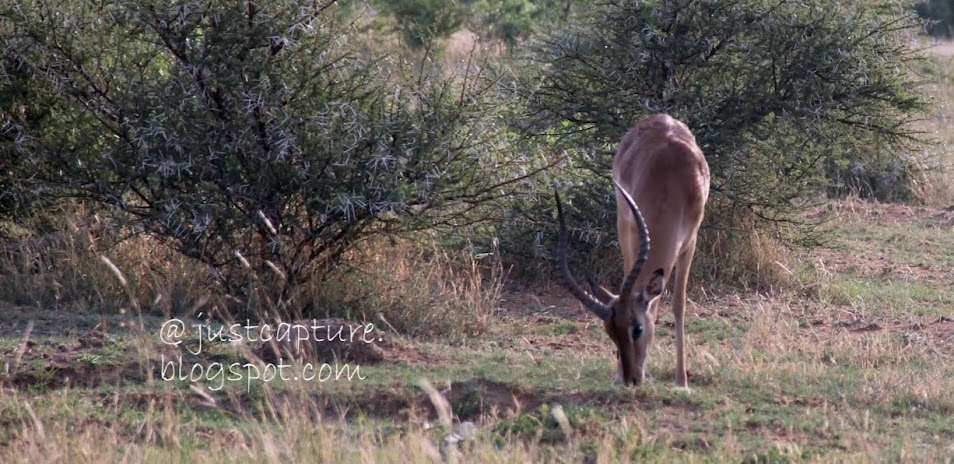There are 14 species of listed African antelope. These are the Eland, Gerenuk, Impala, Klipspringer, Kudu, Lechwe, Nyala, Oryx or Gemsbok, Sable Antelope, Springbok, Steenbok, Tsessebe, Waterbuck, and Wildebeeste Blue.Here are those species that I saw during the trip to Game Reserve in South Africa: Kudu , Springbok, Impala, Gemsbok, Wildebeeste and Hartebeest (not in the 14 species of listed African antelope, why? ) ...and a lot of facts about this lovely animal specie learned.
...unlike other animal, springbok's horns present in both sexes
The springbok, the most sexy animal. It is a medium-sized brown and white antelope-gazelle of southwestern Africa. It can run extremely fast, can reach speeds of 100 km/h and leap 4 m through the air. Springbok mostly eat grass, leaves, shoots and other small plants. They can get their fluid from the food they eat, and survive without drinking water through dry season. --From wiki
Hartebeest, Both sexes have horns, The name Hartebeest was thought to refer to the heart shaped curve of the horns.

the greater kudu

The head of the kudu is darker in color than the rest of the body, a small white chevron runs between the eyes.
Facts about the the horns :
The horns do not begin to grow until the male is between the age of 6–12 months, twisting once at around 2 years of age, and not reaching the full two and a half twists until they are 6 years old; occasionally they may even have 3 full turns.

The impala is a medium-sized African antelope. The male has lyre-shaped horns which can reach up to 45–92 cm in length whereas the female lacks horns.
Impala is the most common African antelope species. Known as the “McDonald’s of Arica” because of their black and white “M-shaped” markings on the bum, it is the one animal that you just can’t miss while on a safari !

The wildebeest, also called the gnu is an antelope of the genus Connochaetes. It is an even-hooved mammal.
The Gemsbok is a large African antelope Oryx. They often live along with other types of antelopes. The female's horns may be curved but the male's are thicker and parallel. Male gemsbok are tough fighters and have been known to gore attacking lions with their horns.
So ... Before I went to South Africa, I only know the Springbok and Impala, when I finished this post, at least now I have more general knowledge of them and get ready to see them again in sooner future. Yeah, South Africa, I wish I could go back to the place again in my life time.










No comments:
Post a Comment